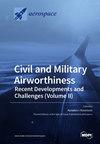基于不同可压缩性校正 k-ω 湍流模型的超音速湍流分离流数值模拟
IF 2.1
3区 工程技术
Q2 ENGINEERING, AEROSPACE
引用次数: 0
摘要
航天飞行器超声速湍流分离流的准确预测是当前数值模拟的一大挑战。基于k -ω方程,在湍流模型中加入了几种不同的压缩性修正,以提高其预测能力。采用斜坡空腔和压缩角两个基准测试用例进行数值验证。模拟与实验进行了详细的比较,以评估压缩率修正对湍流模型的影响。计算结果表明,压缩系数修正对湍流模型性能有显著影响。考虑膨胀耗散和压力膨胀影响的可压缩性修正适用于可压缩自由剪切层的预测,但由于壁面摩擦系数严重低估,可能会对近壁区低速流动的预测产生负面影响。相比之下,仅考虑膨胀耗散影响的压缩率修正是保守的,超音速流动中自由剪切层的可预测性降低,尽管它提高了原始模型的预测,但没有修正。本文章由计算机程序翻译,如有差异,请以英文原文为准。
Numerical Simulation of Supersonic Turbulent Separated Flows Based on k–ω Turbulence Models with Different Compressibility Corrections
The accurate prediction of supersonic turbulent separated flows involved in aerospace vehicles is a great challenge for current numerical simulations. Based on the k–ω equations, several different compressibility corrections are incorporated in turbulence models to improve their prediction capabilities. Two benchmark test cases, namely the ramped cavity and the compression corner, are adopted for the numerical validation. Detailed comparisons between simulations and experiments are conducted to evaluate the effect of compressibility corrections on turbulence models. The computed results indicate that compressibility corrections have a significant impact on turbulence model performance. The compressibility correction, considering the effects of both dilatation dissipation and pressure dilatation, is suitable for the prediction of compressible free shear layers, but it may have a negative impact on the prediction of low-speed flows in the near-wall region due to the severe underprediction of the wall skin friction coefficient. In comparison, the compressibility correction only considering the effects of dilatation dissipation is conservative, with decreased predictability of free shear layers in supersonic flows, although it improves the predictions of the original models without corrections.
求助全文
通过发布文献求助,成功后即可免费获取论文全文。
去求助
来源期刊

Aerospace
ENGINEERING, AEROSPACE-
CiteScore
3.40
自引率
23.10%
发文量
661
审稿时长
6 weeks
期刊介绍:
Aerospace is a multidisciplinary science inviting submissions on, but not limited to, the following subject areas: aerodynamics computational fluid dynamics fluid-structure interaction flight mechanics plasmas research instrumentation test facilities environment material science structural analysis thermophysics and heat transfer thermal-structure interaction aeroacoustics optics electromagnetism and radar propulsion power generation and conversion fuels and propellants combustion multidisciplinary design optimization software engineering data analysis signal and image processing artificial intelligence aerospace vehicles'' operation, control and maintenance risk and reliability human factors human-automation interaction airline operations and management air traffic management airport design meteorology space exploration multi-physics interaction.
 求助内容:
求助内容: 应助结果提醒方式:
应助结果提醒方式:


